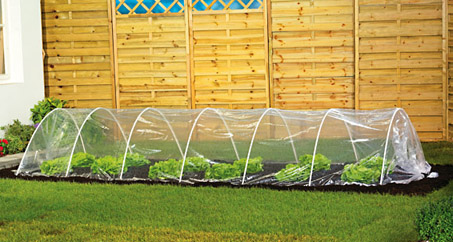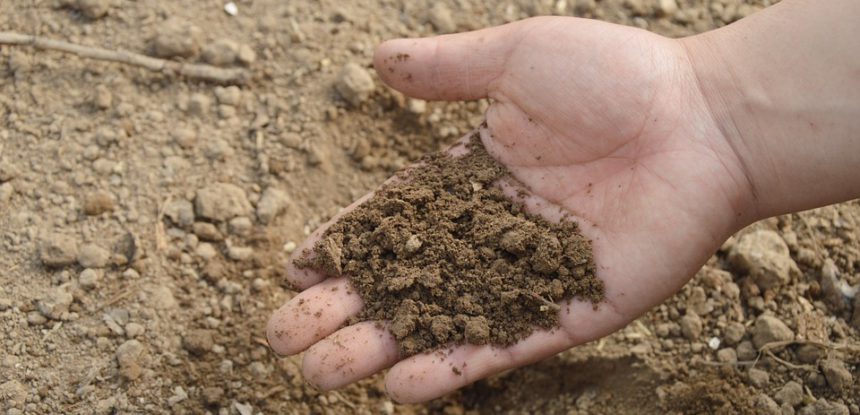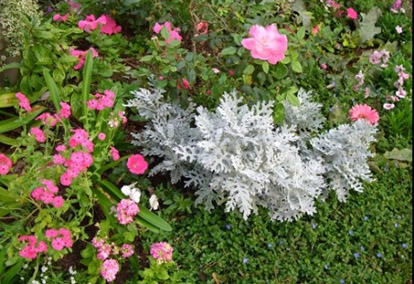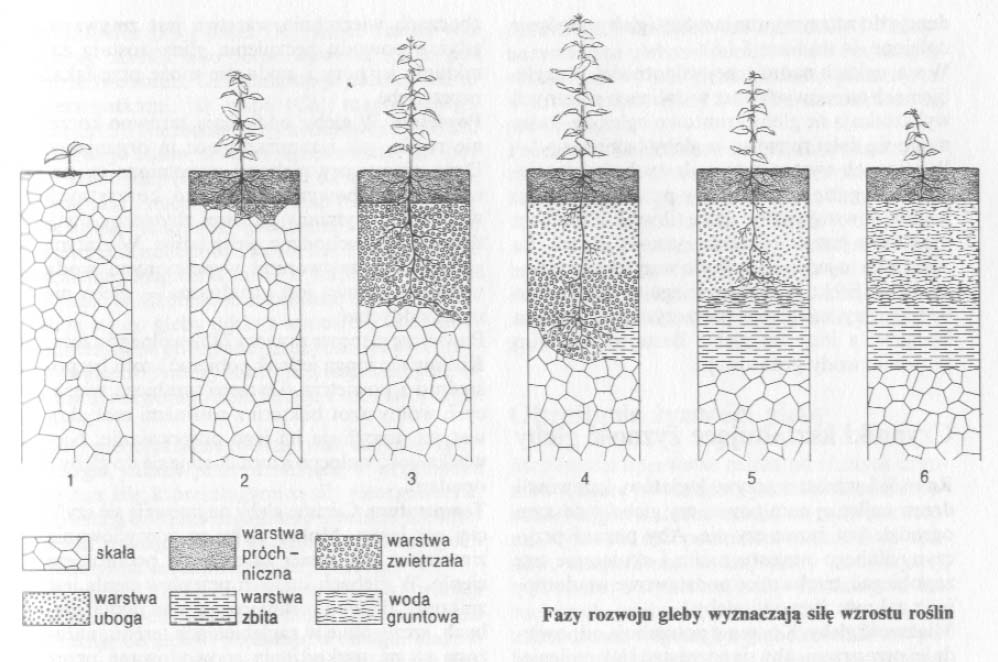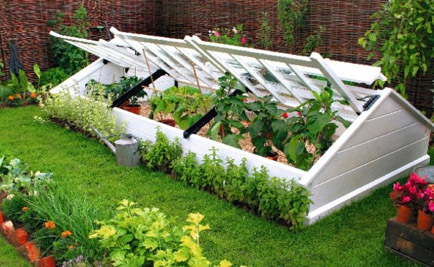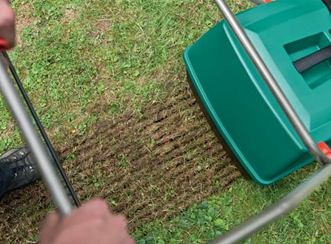 Nasiona traw kupuje się w sklepach nasiennych w postaci gotowych mieszanek, w skład których wchodzi najczęściej kostrzewa, wiechlina, mietlica i życica. Na 10 m2 trawnika potrzeba 30…40 dag nasion. Nasiona wysiewa się rzutowo: połowę idąc w dowolnym kierunku, a drugą połowę – idąc w kierunku prostopadłym do poprzedniego. Do butów przywiązuje się deski, żeby nie robić głębokich śladów. Nasiona przykrywa się przez płytkie zagrabienie gleby. Jeśli w tym czasie nie ma opadów, podlewa się trawnik silnie rozproszonym strumieniem wody, żeby nie spłukać lekkich nasion traw. Nasiona zaczynają kiełkować po tygodniu i w tym okresie trzeba utrzymywać glebę w stanie wilgotnym, ponieważ siewki są bardzo wrażliwe na brak wody. Dopiero, gdy trawa dorośnie do
Nasiona traw kupuje się w sklepach nasiennych w postaci gotowych mieszanek, w skład których wchodzi najczęściej kostrzewa, wiechlina, mietlica i życica. Na 10 m2 trawnika potrzeba 30…40 dag nasion. Nasiona wysiewa się rzutowo: połowę idąc w dowolnym kierunku, a drugą połowę – idąc w kierunku prostopadłym do poprzedniego. Do butów przywiązuje się deski, żeby nie robić głębokich śladów. Nasiona przykrywa się przez płytkie zagrabienie gleby. Jeśli w tym czasie nie ma opadów, podlewa się trawnik silnie rozproszonym strumieniem wody, żeby nie spłukać lekkich nasion traw. Nasiona zaczynają kiełkować po tygodniu i w tym okresie trzeba utrzymywać glebę w stanie wilgotnym, ponieważ siewki są bardzo wrażliwe na brak wody. Dopiero, gdy trawa dorośnie do
6…8 cm (4…8 tygodni po wysiewie) kosi się ją, skracając o 2/3 i wałuje lekkim walcem lub ugniata deskami przywiązanymi do butów. Następnie kosi się ją już co 8…10 dni na wysokość nie mniejszą niż 3 cm. Rzadsze koszenie powoduje pojawianie się chwastów, wyleganie i gnicie trawy.
Na glebach ubogich w składniki pokarmowe, przed założeniem trawnika, a także co roku wiosną, rozsypuje się 6…7 dag/m2 pełnoskładnikowej mieszanki nawozów mineralnych. W okresie lata wystarczy tylko nawożenie azotowe w ilości do 2 dag/m2 nawozu azotowego co miesiąc. Trawom odpowiadają gleby lekko kwaśne, ale gdy zakwaszenie jest zbyt duże, rozwijają się mchy. W tym wypadku jesienią rozrzuca się trochę wapna (5…10 dag/m2). Z kolei zbyt duża dawka wapna może spowodować bujny wzrost chwastów. Usuwanie chwastów jest bardzo ważne, a szczególnie trzeba walczyć z chwastami wieloletnimi, takimi jak: mniszek (mlecz), babka i ostrożeń, wycinając nożem ich korzenie głęboko w glebie. Latem, w czasie suszy trawnik podlewa się, a pod drzewami nawet dwa razy tyle, co na odkrytej przestrzeni. Dobrze na wzrost traw wpływa przewietrzanie gleby przez wałowanie wałem kolczatką lub nakłuwanie widłami, co pozwala na większy dopływ powietrza do korzeni. Wszystkie te dość pracochłonne zabiegi sprawiają, że trawnik jest równy, gęsty i intensywnie zielony.
Rośliny okrywowe
Powierzchnie, które są zbyt małe, żeby założyć na nich trawnik, strome skarpy i zbocza (gdzie koszenie trawnika lub pielęgnacja kwiatów byłaby zbyt utrudniona) albo miejsca pod koronami dużych drzew (gdzie gleba jest wysuszona przez ich korzenie i panuje cień) mogą być obsadzane roślinami okrywowymi. Są to rośliny o niskim, płożącym i zadarniającym charakterze wzrostu, niezbyt wymagające i dostatecznie silnie rosnące. W miejscach suchych i słonecznych dobrze rosną irga, pięciornik i wrzos, na skarpach sadzi się berberys, irgę, jałowiec sabiński i cis, które mocno zakorzeniają się w glebie. Runo pod drzewami tworzy się z bluszczu, kopytnika, paproci, które doskonale zarastają puste miejsca i pozwalają zaoszczędzić pracy, bo nie dopuszczają do rozwoju chwastów.
Ogródek skalny przy domu lub na działce ma charakter rabaty skalnej. Jest też czasami zastępowany przez murek oporowy lub schody obsadzone niskimi roślinami okrywowymi. Przed założeniem rabaty skalnej trzeba przygotować teren, dokładnie przekopując glebę i usuwając z niej wszystkie chwasty. Gleby ciężkie wymagają drenażu z 5…10 cm warstwy tłucznia wapiennego oraz warstwy żwiru i piasku grubości 20…40 cm. Gleby lekkie można wzbogacić przez dodanie torfu, ziemi liściowej lub wrzosowej.


